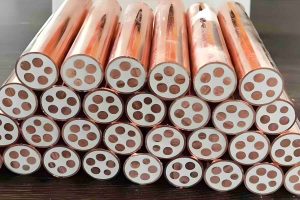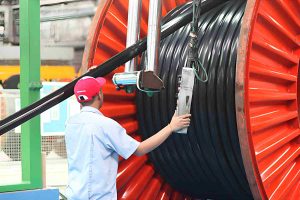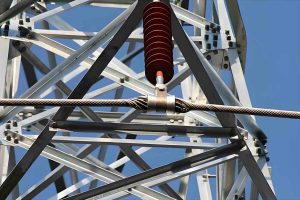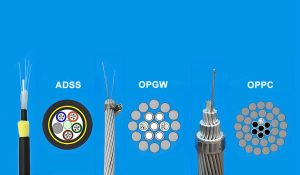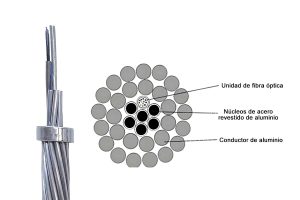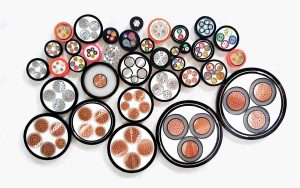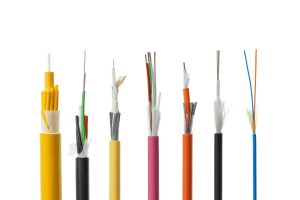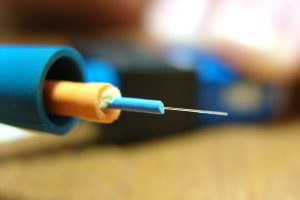BTTZ mineral cables are high fire resistance cables with copper core, copper plating and magnesium oxide insulation. This type of cable is new generation and is made up of solid copper rod conductor, an outer coating of seamless copper tube and an intermediate filling of magnesium oxide crystalline powder as an insulating material. It has characteristics such as resistance to high temperatures, fire and explosion proof. It can operate long-term continuously at a temperature of 250°C and maintain short-term operation of 30 minutes in extreme conditions of 1000°C. BTTZ mineral cables have a high current capacity, a small outside diameter, high mechanical resistance and long service life, generally without the need for a separate grounding conductor.
Information
Wire and cable are important industrial products for a wide range of applications.. ZMS provides you with technical information on all types of wire and cable.

What Does the Wire and Cable Inspection Include??
Electrical cables and wires, as important means of transmitting energy and signals, have a quality that directly affects the safe and stable operation of the electrical system. Therefore, Cable and wire inspection can ensure that it meets technical standards and requirements. This is an important responsibility of wire and cable manufacturers..
What is IOPPC Cable – Isolated Fiber Optic Composite Phase?
IOPPC is a new type of insulated optical fiber composite phase, which was developed from OPPC (Optical Phase Conductor).
How to Calculate Cable Voltage Loss?
Voltage loss refers to the numerical voltage difference across the ends of impedance components in a circuit.. In engineering calculations, the voltage loss approximates the longitudinal component of the voltage drop.
ADSS OPGW OPPC: Selection of Fiber Optic in Air Lines
Fiber optic cables commonly used in high-voltage transmission lines include all-dielectric self-supporting optical cable (ADSS), fiber optic composite aerial ground cable (OPGW) and the fiber optic composite aerial phase cable (OPPC). Each type of cable has its specific applications in the lines.
What is OPPC Cable? Optical Phase Conductor
OPPC cable (Optical Phase Conductor) It is a type of optical cable specialized for electrical energy. This aerial cable combines fiber optic units within phase conductors, thus having a double function in the phase line and communication.
How to Determine the Cross-sectional Area of Electrical Conductors?
In electrical design and technical reforms, scientific selection of cross-sectional area of electrical conductors is crucial. Experienced electricians will calculate the current according to the electrical load to decide the cross-sectional area of the wires.. There are also some electricians who will choose the cross-sectional area of the wires based on a mnemonic.. Today ZMS will share with you a scientific and simple method to select the cross-sectional area of cables.
Fiber Optic Cable Models: How to Choose the Right Cable
There are many models of fiber optic cables, and the materials, structures and uses vary between them. To facilitate differentiation and use, A unified code has been established for fiber optic cables. This article will delve into the interpretation of this code to help you select the correct type of fiber optic cable..
How is Green Transformation Achieved in Electrical Cable Manufacturing??
As environmental problems become increasingly evident, all industries are actively exploring ways to achieve sustainable development. The wire and cable industry also faces the urgent challenge of how to save energy and reduce pollution during the production process.. The green transformation of electrical cable manufacturing is a production method aimed at environmental protection, that requires reducing or eliminating environmental pollution during the production process, improve resource use efficiency and promote clean production.
Complete Introduction to Multimode and Singlemode Fiber
Fiber optics are the most basic and commonly used product in the field of communications.. Optical fiber can be divided into single-mode optical fiber and multimode optical fiber.. in a short sentence, single-mode optical fiber is suitable for long-distance communication transmission, while multimode optical fiber is suitable for short-distance communication transmission.

